
There’s a lot of talk right now about how to revitalize downtown Portland. One of the best tools we have to meet this challenge is our public right-of-way. Specifically, we need to use more space for community and less space for cars.
A new feasibility report for a major renovation of the Keller Auditorium passed unanimously by City Council this week, would take an exciting step toward that goal.
The 106-year old auditorium is poised for a major rehab, and the folks behind it see a new pedestrian plaza on SW 3rd Avenue as a major part of the upgrade. Currently, space for cars cleaves the Keller Auditorium off from the iconic Keller Fountain. The two-lane road and two lanes of on-street parking are guilty of, “disconnecting the two urban places,” states, A Keller Renaissance: Final Report, the 63-page feasibility study passed by Council Wednesday.
“There is an opportunity for the fountain plaza and auditorium to blend together by remaking Third Avenue as a pedestrian-first plaza. This approach would improve the sense of place for both landmarks while increasing pedestrian safety,” the report reads.


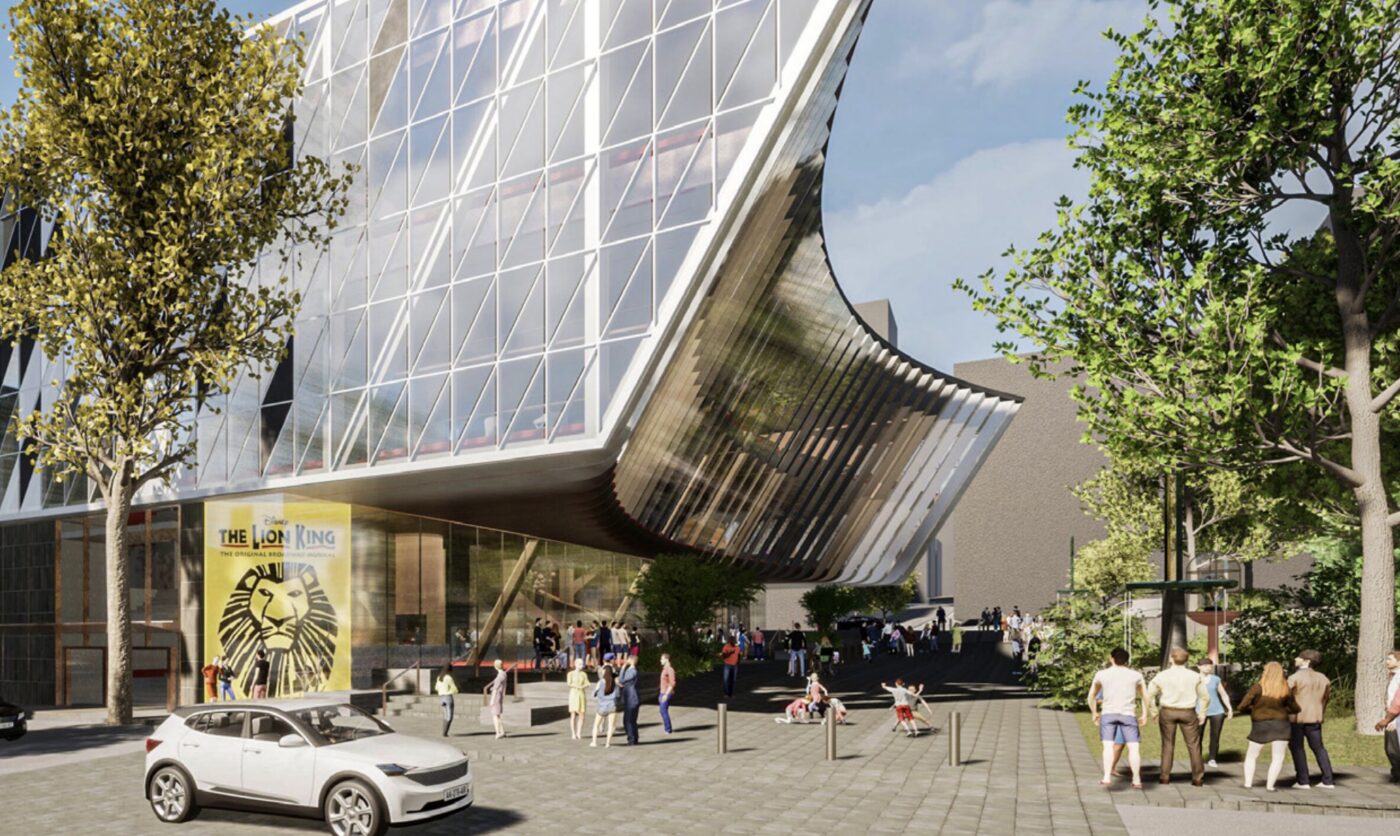

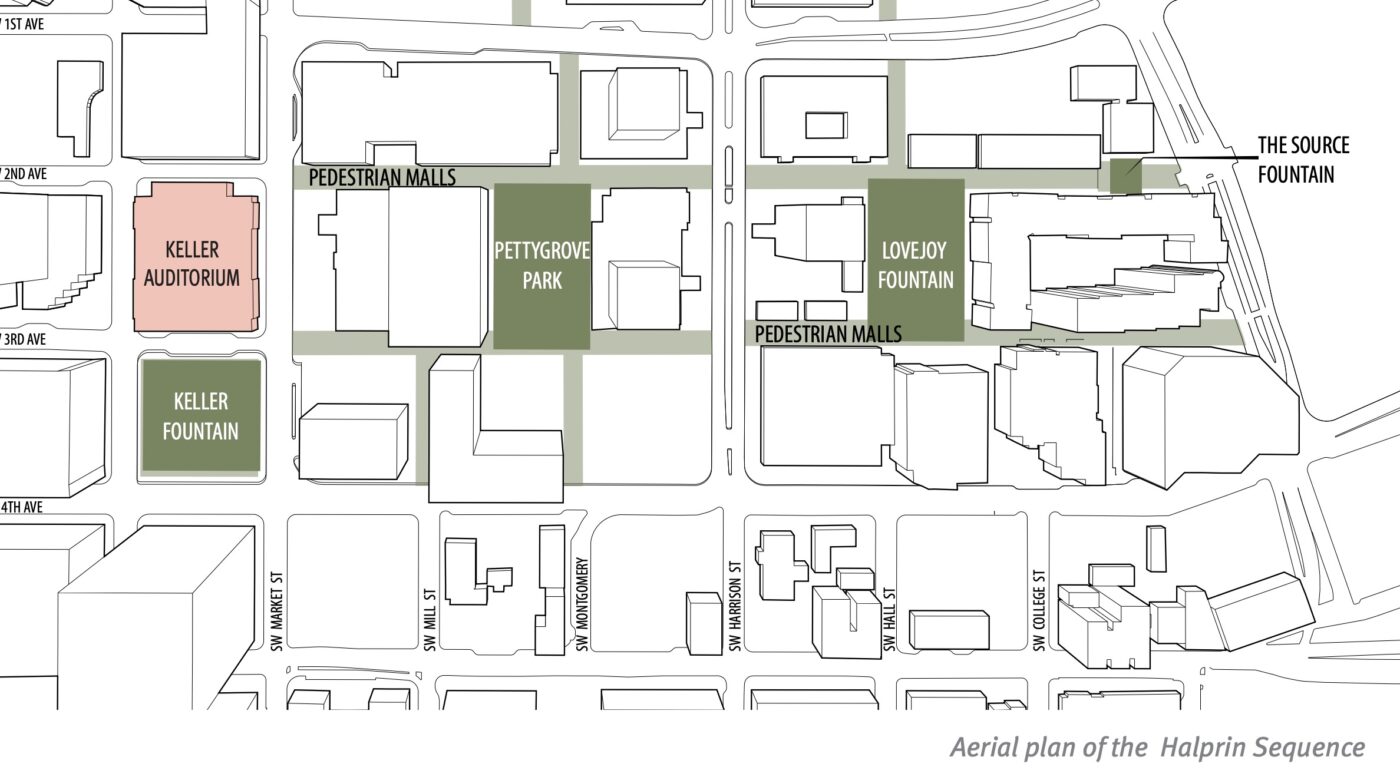
The 3,000 seat Keller Auditorium, which owned by the City of Portland and operated by Metro, is one of Portland’s most important cultural sites. It’s home to the Portland Opera, Oregon Ballet Theater, and is the only place in town that regularly hosts major Broadway productions. Bakers of the new report want City Council to green light an estimated $200 million renovation project that will bring it up to modern theater standards.
Tim Eddy, president of Hennebery Eddy Architects, the firm that developed the report, said in council testimony that the plan, “Has potential to energize the neighborhood and take better advantage of its physical relationship to the world-renown Keller Fountain,” and, “create public lobby space and a programmable urban plaza connecting the auditorium and fountain so they can perform as one.”
While the vision presented in the report shows a cross-section with 14-feet of “potential vehicle access” on 3rd Ave., the tone in the text and at council was that it wouldn’t take much more than a nudge to make it completely carfree. And there’s already been some planning momentum for the concept, thanks to Portland State University students.
The new plaza would not only help activate this part of downtown, it would bolster the existing Halprin Sequence, a series of open spaces listed on the National Historic Register of Historic Places that links the Keller to the Lovejoy Fountain and Pettygrove Park. With its proximity to Portland State University, major hotels, other cultural venues, and public transit, a carfree plaza at this location should be a no-brainer.
Here’s how the report describes the potential of the plaza:
“The new glass façade carries the revitalized spaces within, extends beyond the existing concrete colonnade, cantilevers over the new pedestrianized plaza of SW Third Avenue, and engages with the park. This gently curving façade displays the performative wonders from inside the auditorium stage, connecting the spaces to the outside and infusing the fountain and the surrounding spaces with new energy.
Together, this space will not only be the prologue and epilogue to every performance at the Keller, it will be a standalone attraction — a strong piece of public art on its own that becomes a true destination in combination with a revitalized plaza and auditorium.”
Everyone on council loved the report (granted, they were not being asked to make any binding decisions, just to accept the report into the record). Commissioner Rene Gonzalez said (in written remarks) that the vision is, “exciting because it speaks to activating space in a new and exciting way,” and that, “in particular, turning a section of 3rd Avenue into a pedestrian thoroughfare.” Mayor Ted Wheeler called the report, “So uplifting, so visionary, and so compelling in terms of what our community can be.”
Stay tuned for public engagement around this vision and a decision point back at City Council in spring 2024. If all goes according to plan, construction could start in 2027.


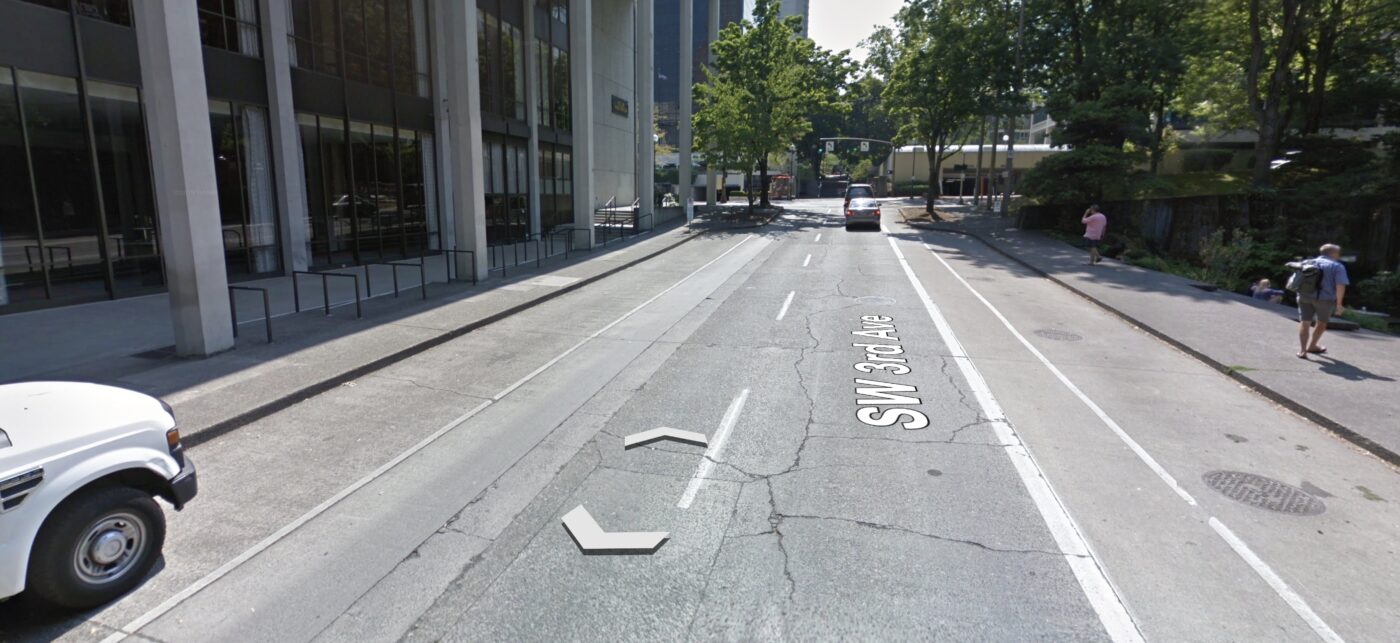
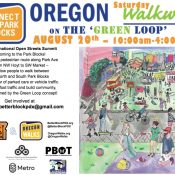

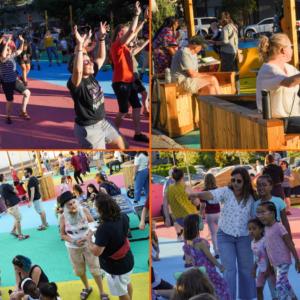

Thanks for reading.
BikePortland has served this community with independent community journalism since 2005. We rely on subscriptions from readers like you to survive. Your financial support is vital in keeping this valuable resource alive and well.
Please subscribe today to strengthen and expand our work.
During this redesign, I really hope that there is some public dialogue about renaming of the fountain/park. Ira Keller was basically single-handedly responsible for all of the most outrageous urban renewal projects in the city from the late 50s to early 70s as “the autocratic chair of the Portland Development Commission .. for 13 years“. This included bulldozing lots of homes and businesses (primarily immigrant and Jewish owned) in the South Auditorium area, as well as being responsible for the demolition of the blocks in Albina for the Emmanuel Hospital expansion (among other questionable PDC projects). I think it’s well past time for the city to stop honoring him.
(interesting to note that the auditorium is named after Ira Keller’s son, Robert who donated money to renovate it in 2000)
Who should we rename it after?
Lawrence Halprin!
A guy that helped design the adaptive reuse of Girardelli Square into a tourist trap instead of affordable housing for the marginalized communities of San Francisco?
Helen Keller would be an easy switch.
Matt Groening
Oh sure, for his show with rampant racist undertones with multiple characters.
“PS Piazza”
Can we stop with the cancel culture and just focus on making Portland a dynamic, prosperous and livable city for ALL people?
No, because I am not happy until you’re not happy, and that’s equity.
Those two projects blumdrew mentioned–the South Auditorium “urban renewal” and the Emmanuel Hospital expansion–are the epitome of cancel culture, in that they demolished acres of neighborhoods populated by minorities–far more “canceling” than renaming a building or fountain.
They were the exact opposite of your wish of “making Portland a dynamic, prosperous and livable city for ALL people”.
So blumdrew has a point in wanting a discussion of whether it’s still correct to honor the person who (if he’s correct) pushed those through.
If only Ira Keller and the Portland City Council at the time had agreed with that instead of engaging in systemic displacement of ‘undesirables’. Having bare minimum standards for who we honor with public monuments isn’t ‘cancelling’. By continuing to honor people like Ira Keller, we are signalling to a segment of the population that they aren’t included in ‘ALL people’.
Fixed it for you:
The epitome of Portland progressivism is to strenuously virtue-signal support for identitarian re-branding while quietly shrugging about the tens of thousands of poor Portlanders* whose lives are traumatized or worse by the everyday injustice of Portland liberal democratic corporatism.
* who are disproportionately people of color
People can want multiple things. Renaming a fountain/park is a pretty minor ask, and one that is worth considering in the context of a $200 million remodel.
Wanting an iconic fountain to not be named after Ira Keller does not mean I’m “quietly shrugging about the tens of thousands of poor Portlanders whose lives are traumatized or worse by the everyday injustice of Portland liberal democratic corporatism.” It just means I think Ira Keller was a scumbag who destroyed the lives of thousands of poor Portlanders (some of which are still alive and living in the city), and because of that he probably shouldn’t be personally honored
Newsflash – Ira Keller directly perpetuated harms onto Portlanders, some of which are still alive and living in the city. If he demolished my family home or business without any public oversight, I surely wouldn’t want to go to a place that honors him. Creating a city that is dynamic, prosperous and livable for all means not honoring people like Ira Keller.
The cost of renaming a fountain/park is a very small price to pay towards a more livable city.
Love the idea of making third a car free space on that block. The Keller fountain is already an awesome space. Creating a direct walking connection to the theater that isn’t interrupted by a car sewer would really be a huge improvement. Especially when the fourth Ave bike lane is actually built.
Check out this url for 12 locations of more walkable and bikeable streets/plazas : https://trec.pdx.edu/news/psu-transportation-students-envision-living-streets-car-free-corridors-downtown-portland
” In the 1970’s, Portland had a dream: to create a “pleasurable human environment” by giving space to people rather than cars. Several car-free areas were identified in the city’s ambitious 1972 Downtown Plan, approved by city council at the time.
Four Portland State University (PSU) students took that dream a little further this year. In the Fall 2022 term, Cameron Bennett, Owen Christofferson, Emily D’Antonio and Aidan Simpson created a Downtown Portland Living Streets Plan centered around a new street typology for Portland: Living Streets. “
One thing I’ve been curious about is if there is any sort of map of existing driveways in Portland. As I think about pedestrianizing streets in the downtown area (and elsewhere), that would be helpful in terms of seeing which areas wouldn’t need to have access accommodations.
Anyone know of any resources for this, like GIS data?
PBOT has always mapped driveways to utter detail as well as curb ramps, for street design purposes, but I don’t know where you would get that data – but the engineering firms do use the city data, so it has to be available somewhere.
I know where I can find plan data for recent construction, but I don’t know if that can be easily mapped to GIS coördinates. It’s the kind of thing that can be pretty easily done for short sections of street using Google Street View, but that doesn’t really scale up to an area the size of Downtown. I might try doing it for the map Jonathan posted though.
When I worked in the GIS section at PBOT 2000-2006 we had the layers in both autocad and ArcMap, including curbs, sidewalks, driveways, ramps, and a lot of other stuff that might surprise you, not just downtown but a lot of other parts of the city, and I’m sure it’s been updated since then.
I’ll keep looking then. Couldn’t find anything just poking around Portland’s ArcGIS page, but maybe I could email someone at PBOT.
Data layers to start with:
Curbs
Corners Improved
Bridges (mostly viaducts)
Pavement Markers (multiple files)
Street Furniture
Sidewalks
Parking Slots (slot gaps usually indicate driveways)
Curb Ramps
River Bridges
I appreciate the acknowledgement of the Halprin sequence! It is an incredible series of parks that seem so unappreciated in Portland. These are taught in urban design, architecture and landscape architecture classes around the world and it is great to see this getting more recognition. Plus , it is great news that Henneberry Eddy is involved- they are a fantastic firm for this project.
Halprin sequence is also on the National Register of Historic Places: https://www.portlandoregon.gov/fish/article/439143
https://www.halprinconservancy.org/events/national-register-of-historic-places
I’m not entirely sure convinced that renovation of the existing building is the best option for moving forward, but if it’s the option that does get chosen it should absolutely include a car-free plaza linking the auditorium and the fountain.
Yes. Portland’s plazas and downtown parks are almost all isolated from the buildings around them by vehicle traffic. It really compromises them, compared to being able to walk out of adjacent buildings right into the space.
Also, that plaza link might be most successful when accompanied with the building renovation, but it certainly doesn’t rely on the renovation to make it make sense. It would be great to see the plaza link happen regardless of the renovation project happening.
Is anyone else concerned that Keller Auditorium isn’t really a vibrant place? Aside from times when events are happening, the building is quiet and locked, no? And there’s nothing really to do at the Fountains. Why would people gather there?
Downtown plazas should be community gathering places, with seating, socialization, recreation and food carts nearby. The project plan talks about improvements to the inside of Keller Aud but I’m afraid that without improvements to the plaza itself, there’s no real reason for people to gather here. We’ll have yet another urban amenity that isn’t actually vibrant (e.g. Tanner Springs Park).
I hear you on this Mike. In the report they do talk a lot about a “programmable” space that they would use for outdoor art and cultural stuff. Also worth noting that the Downtown N’hood Assoc is very supportive of it, so they could be a good partner to keep it active too. But yes, that is always a concern but we really need to meet that challenge!
NA support is good to hear.
I see $200+ million being invested in a theater for the rich but how much will be spent on the public plaza commons outside? I don’t know if that would be public or private funds but this is the real equity question to me. Does Keller Fountain even have a bathroom today?
$200m is a lot. If they run 100 events per year, selling 2000 tickets per event, that’s a $50 surcharge on every ticket for the next 20 years. I’d rather see the City invest $20m each in 10 different plazas. That, to me, is a far more equitable investment and can provide a new walkable amenity to those neighborhoods.
I think, given the type of folks behind this and the historic, iconic nature of the area, they would never neglect any aspect of the project. I could be wrong, but these are the type of folks that don’t skimp on design. I’d expect nothing less than world-class when big property owners and cultural funders are behind something.
…as long as taxpayers are picking up the tab for the rentier class.
It’s inaccurate to dismiss a place like the Keller Auditorium as a place only for the rich. I’ve been to a few shows there, and the tickets weren’t really noticeably more expensive than other venues around town. Balcony tix for Wilco next week are going for $50 including fees.
Having municipal owned arts facilities is extremely valuable. The arts are for everyone! What are the equity considerations if Portland no longer has a city-owned, high-quality venue attracting a range of artists and performers?
Strong agree. And also the programming at the Keller probably attracts a demographic mix that’s much representative of the city than at, say, the Gerding Theater.
Only an upwardly-mobile college-educated member of the middle class could make this claim with a straight face.
Keller auditorium host 400,000 people per year, and the city has determined that it needs major seismic rehabilitation.
I can’t disagree that these spots lack vibrancy, but the Fountains and Tanner Springs are two of my favorite spots downtown simply because I like hearing and looking at water. I’ve never been bothered that they aren’t jammin’ and probably enjoy that they’re both a little mellow and peaceful. Just funny is all.
I have memories of this little zone being busier when I was younger. KOIN Cinema was right there. Saw KIDS there. Maybe my memory is wrong of this area and it has always been sleepy.
Yes, downtowns need a mix of types of outdoor spaces, especially if downtowns are to work as places for people to live, and not just work or visit.
In fact, some of the worst urban design proposals I’ve ever heard have involved taking quiet urban outdoor spaces “developing” them. Too often people see tranquil areas as areas needing activation and bustle. Some public spaces should be that way, others–the Fountains and Tanner Square are perfect examples–should not.
In regard to the proposed link from Keller to the fountains, it’s going to be filled with people before and after performances in any case, and if it ends up being pretty quiet in between, that seems OK. That’s also what I love about Pioneer Courthouse Square–sometimes it’s standing room only chaos, other times I’m the only one there. The contrast in moods enhances it.
You appear unfamiliar with the Halprin Sequence of which the Keller and the fountain are a part. It is a series of plazas and gathering places. Everything does not have to be Pioneer Square and every place doesn’t need food carts. It is unique space recognized around the world and should be appreciated for what it is.
A common root of downtown Portland’s lack of vibrancy is the lack of people caused by creating a day-time or special event commuter dynamic to please suburbanites instead of a livable downtown that is warm and welcoming to people.
The economic investment in this area is built on a “box to box to box and back” paradigm of human experience that leads to a bleak urban experience. People travel from their house (box 1) in their cars (box 2) to closest possible proximity to their destination (box 3) and then back via the same route. This experience has been prioritized to the detriment of people who live in the area or who move without a box. As a result, there is a tremendous amount of neglect of the urban environment and large stretches of time where these places are desolate and intimidating. The people who’ve invested in this resource intensive, heavily subsidized faux-urban core are flailing as the world changes. They are fighting the vibrancy that they are begging the city to fabricate.
Downtown needs more residential use, so that there can be a palpable core presence of people that build a human friendly place. This density and joyful environment will not fully come into being unless box 2 is eliminated.
“box to box to box and back”
I’m not sure I really understand this formulation. Is it the enclosed “box” nature of a car that makes its linkage between home and office objectionable? Is “box to bike to box” and back okay? What if the middle box is a convertible? Or a bus?
I think you could simplify things by just saying “people driving into the city”, which is a lot clearer, even if it doesn’t sound as clever.
People already gather at the Keller fountain on a daily basis, usually spring through late fall. This past summer there were a lot of families with children who took them to play in the water, along with your typical hippie crowd smoking weed in little groups.
I’ve never been inside the building, but I HAVE swam in the fountain on a Pedalpalooza ride. I am clearly a cultured person!
If even Gonzalez likes it, it can’t be all good. That’s a red flag if ever there was one!
The enemy of my enemy is my friend? That’s never burned us before.
More like the friend of my enemy is automatically slightly suspect. And in this case, we have concrete material facts, like a relatively dead but high rent corner of downtown, set to receive a big wad of public money. And given Gonzalez’s donors and economic and political commitments, we can pretty easily guess who stands to benefit (or at least who GONZALEZ thinks stands to benefit!)
“The enemy of my enemy is my friend? That’s never burned us before.”
Never! I’m going to join Guy and let Gonzalez decide what I like and dislike from here on out.
That’s not at all what I said, and would be childish in the extreme. Kind of like embracing an ultrareactionary opposition to all public spending, merely on the grounds that economic elites are too often able to usurp the lion’s share of its benefits for themselves. But the answer to that problem is neither to uncritically oppose nor embrace public spending, but rather, for the vast working class majority to organize and advance majoritarian interests in all such spending decisions.
So the unchildish answer here should be to neither critically or uncritically embrace or reject what Gonzales likes, but to evaluate it independently on the merits.
Yes, but one can also choose to use Bayesian statistics to further inform one’s judgment on it, too, Ie, his other issue and policy preferences have a bad track record, which is not immaterial to the odds of his preferences being bad here, too.
Oh brother. Gonzalez seems to be one of the few leaders in this town trying to make it livable once again.
Not for those living without houses.
Not for nonmillionaires.
Would like to see a similar treatment to the park blocks in front of the Art Museum/Historical Society/Newmark between Jefferson and Main.